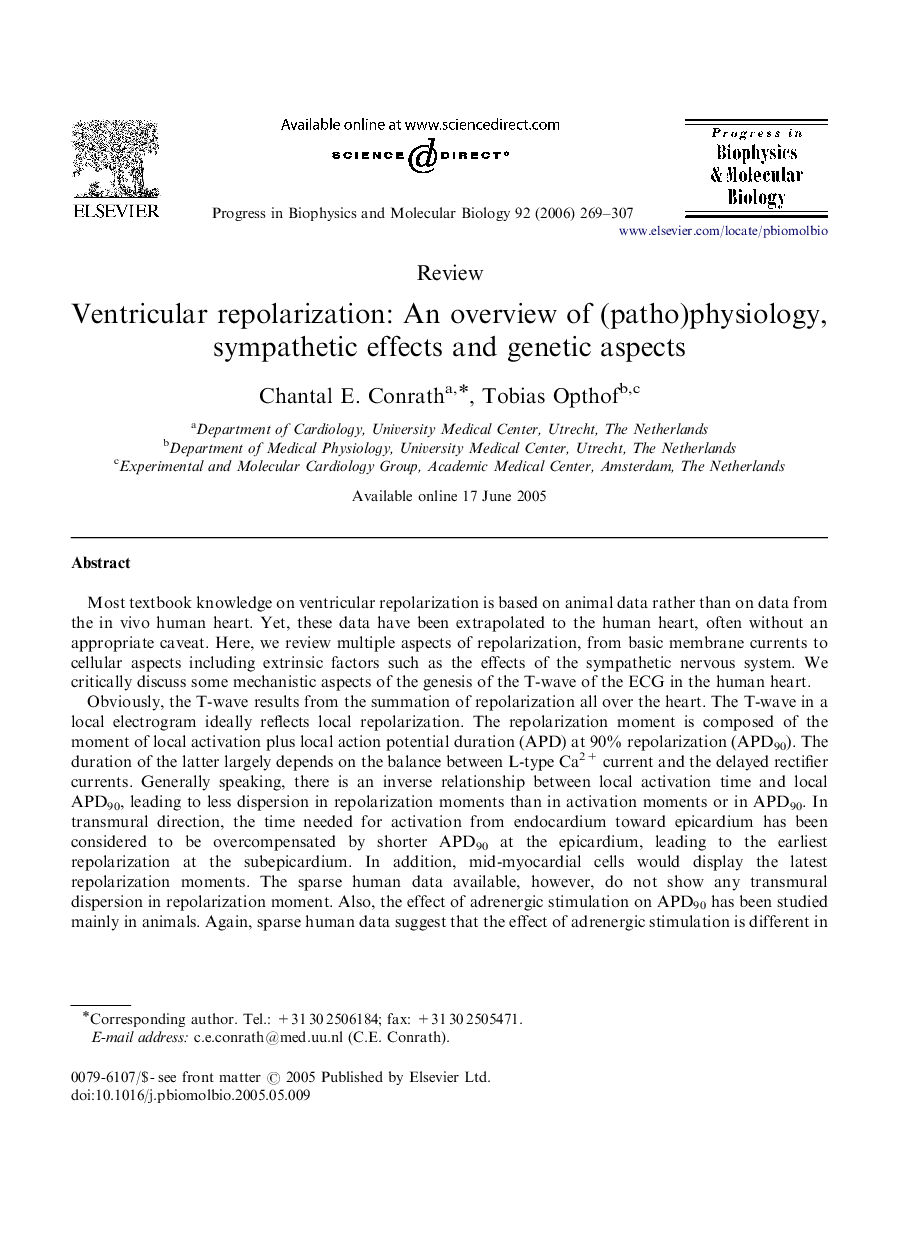| Article ID | Journal | Published Year | Pages | File Type |
|---|---|---|---|---|
| 2070436 | Progress in Biophysics and Molecular Biology | 2006 | 39 Pages |
Most textbook knowledge on ventricular repolarization is based on animal data rather than on data from the in vivo human heart. Yet, these data have been extrapolated to the human heart, often without an appropriate caveat. Here, we review multiple aspects of repolarization, from basic membrane currents to cellular aspects including extrinsic factors such as the effects of the sympathetic nervous system. We critically discuss some mechanistic aspects of the genesis of the T-wave of the ECG in the human heart.Obviously, the T-wave results from the summation of repolarization all over the heart. The T-wave in a local electrogram ideally reflects local repolarization. The repolarization moment is composed of the moment of local activation plus local action potential duration (APD) at 90% repolarization (APD90). The duration of the latter largely depends on the balance between L-type Ca2+ current and the delayed rectifier currents. Generally speaking, there is an inverse relationship between local activation time and local APD90, leading to less dispersion in repolarization moments than in activation moments or in APD90. In transmural direction, the time needed for activation from endocardium toward epicardium has been considered to be overcompensated by shorter APD90 at the epicardium, leading to the earliest repolarization at the subepicardium. In addition, mid-myocardial cells would display the latest repolarization moments. The sparse human data available, however, do not show any transmural dispersion in repolarization moment. Also, the effect of adrenergic stimulation on APD90 has been studied mainly in animals. Again, sparse human data suggest that the effect of adrenergic stimulation is different in the human heart compared to many other mammalian hearts. Finally, aspects of the long QT syndrome are discussed, because this intrinsic genetic disease results from repolarization disorders with extrinsic aspects.
